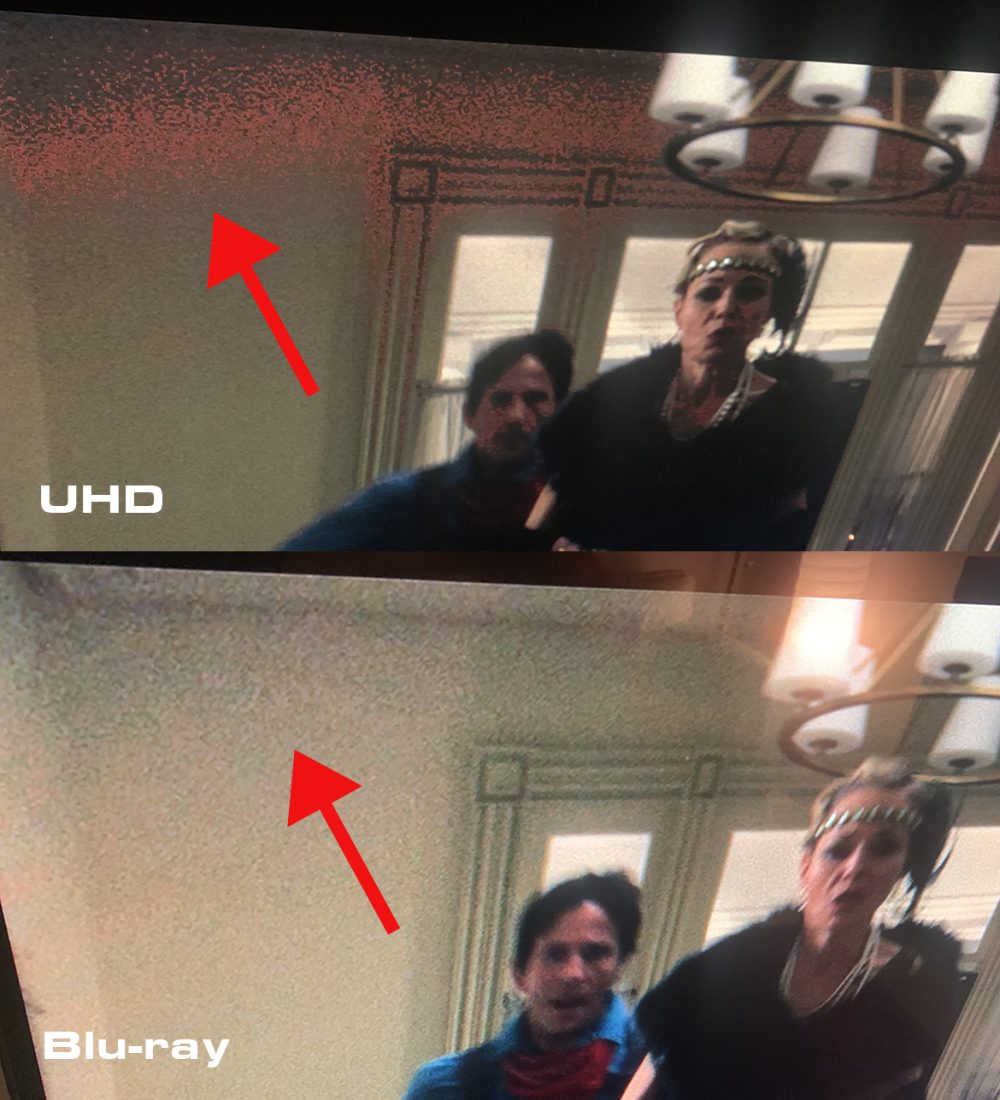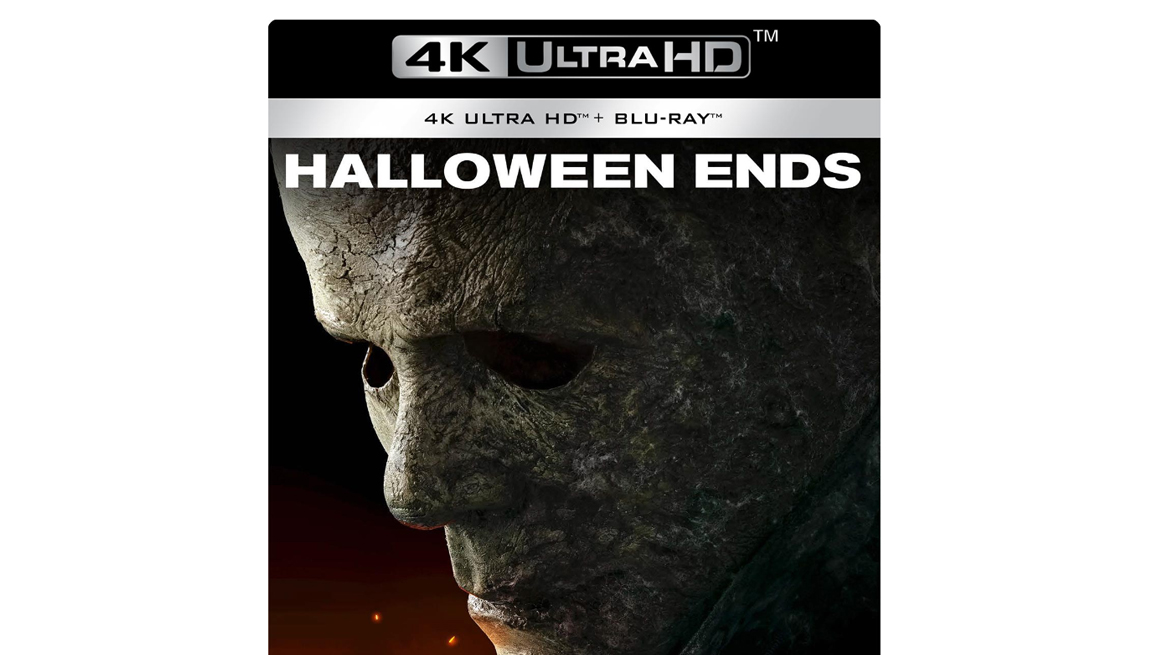TL;DR
Forget the scares, Halloween Ends is a confusing mess with a convoluted plot and a pacing problem. Despite the title, Michael Myers takes a backseat while a new, underdeveloped character, Corey, gets too much screen time and a questionable origin story. The film even inexplicably jumps ahead in time, offering a bizarrely calm Laurie Strode. Plus, the UHD release is plagued by a distracting red artifact, making the Blu-ray the only viable option. While Jamie Lee Curtis delivers a final performance, the film itself is a major letdown. Want to know if it's worth your time? Read our full review.
In Halloween Ends, some time has elapsed since the events of Halloween Kills. Laurie Strode (Jamie Lee Curtis) and her granddaughter Allyson (Andi Matichak) have relocated to a new residence, attempting to establish a semblance of normalcy. In the year preceding the film’s timeline, Corey (Rohan Campbell), while babysitting on Halloween, was involved in a fatal accident involving the child in his care. Consequently, Corey is ostracized by the town, deemed responsible for the tragedy. Allyson and Corey connect through their shared trauma, yet Corey harbors a concealed aspect. Laurie realizes belatedly that Corey is not as virtuous as she initially perceived, and a more sinister presence lurks in the shadows.
A close acquaintance is a devoted aficionado of John Carpenter, and through him, I experienced the original 1978 film for the first time. As a filmmaker, I found it remarkable that the film achieved such significant impact, considering its modest budget and relatively straightforward narrative. The inaugural Halloween proved to be a substantial success, initiating a trend of masked antagonists committing murders on various occasions. The Friday the 13th series serves as a prime illustration of capitalizing on this concept. Halloween spawned numerous sequels and even a complete reboot – unrelated to the original film – in the early 2000s. In 2018, a soft reboot was introduced, functioning as both a sequel and a reboot, mirroring the approach subsequently adopted by Scream. The 2018 Halloween was surprisingly well-executed; however, some elements proved less convincing. For example, Laurie Strode’s decision to allow her life to stagnate due to her fear of Myers, who attacked her one night four decades prior and has since been confined to a mental institution, felt somewhat contrived. Her fear seems predicated more on his actions throughout the subsequent sequels (which are now non-canonical). Halloween Kills, released in 2021, is a reasonably competent sequel and ranks among the series’ most graphically violent installments. A notable issue arises from the filmmakers seemingly conflating Myers with Jason Vorhees from the Friday the 13th franchise, as Myers exhibits near-immortality and the capacity to endure extreme physical trauma. Halloween Kills concludes on a cliffhanger, suggesting that Halloween Ends would commence more or less immediately afterward, reinforced by the fact that Halloween Ends premiered almost exactly one year following Halloween Kills.
Therefore, it was surprising to discover that Halloween Ends takes place several years after Halloween Kills and that Laurie Strode, having spent four decades in terror of the incarcerated Myers, has ostensibly transitioned into a conventional grandmother, complete with a new home and baking activities. The premise that Myers, who purportedly remains at large, does not constitute a source of concern for the typically vigilant Laurie Strode, requires significant suspension of disbelief from the audience.
The script is among the most convoluted I have ever encountered. An excessive amount of screen time is dedicated to the new character, Corey, without providing sufficient justification. While the rationale becomes apparent eventually, the preceding frustration proves detrimental. Halloween Kills is a profoundly violent film, leading me to anticipate an even more extreme portrayal in Halloween Ends. However, this is not the case at all. Instances of violence are frequently cut away. This is particularly jarring given that Michael Myers essentially functions as a supporting character in his own film. I generally strive to avoid spoilers; however, I feel compelled to express my thoughts. Readers seeking a completely spoiler-free assessment can safely read up to and including the trailer provided below.
Beyond the rambling script and apparent censorship, the film exhibits a surprising lack of momentum and excitement. An excessive amount of time is allocated to less compelling aspects, while other areas are underdeveloped. The film’s primary redeeming quality lies in witnessing Jamie Lee Curtis as Laurie Strode confronting The Shape for the final time. Despite being titled “the end,” the film’s conclusion is a muddled anti-climax.
Typically, in my reviews of UHD releases, the viewing experience is enhanced significantly by the flawless technology. Even a relatively mediocre film, such as Black Adam, transforms into an enjoyable home cinema experience. Regrettably, Halloween Ends also disappoints in this regard.
Upon initiating playback, I observed a red artifact in the image, initially attributed to a stylistic choice within the film. However, its persistent presence became distracting. Consequently, I replaced the Ultra-HD disc with the included Blu-ray disc. The red “noise” is absent from the Blu-ray disc. See the image below for comparison.

The red artifact is identified as a compression error, rendering the UHD 4K release essentially unusable. It is inexplicable how this defect passed quality control and reached consumers. I opted to complete my viewing experience using the Blu-ray disc. The picture quality is acceptable; however, the blacks and colors are somewhat muted. A positive aspect is the inclusion of the Dolby Atmos soundtrack on the Blu-ray disc, which delivers impactful sound where appropriate, and John Carpenter’s iconic Halloween theme sounds excellent. Adding insult to injury to an already disappointing UHD release, no supplementary material is included.
In summary, Halloween Ends presents a cascade of disappointments. Not only does the film fail to meet expectations, but the UHD release stands out as the worst I have ever reviewed. The Dolby Atmos track and Jamie Lee Curtis’s performance against Myers provide the only minor points in its favor.
SF Studios provided review copies for this assessment. Provision of materials does not influence our editorial evaluations. Our reviews are conducted independently, prioritizing the interests of our readers and consumers.
OBS SPOILERS UNDER THE TRAILER FOR THOSE WHO WANT.
SPOILERS -> Now I’ve warned enough! The new character Corey encounters Myers in a sewer tunnel, his refuge since the events of Halloween Kills. Instead of killing Corey, Myers releases him, and Corey subsequently commences his own killing spree. A more compelling narrative would have involved Corey discovering the dead Myers, assuming his identity and mask, and initiating the killings. This direction appears to align with the filmmakers’ initial conceptualization, but was altered to facilitate the final confrontation between Strode and Myers that was marketed to the audience. The fundamental issue is that Myers becomes a supporting character in his own film, leaving the audience without a clear character to invest in. Personally, the “Myers is dead” concept would have been a more effective narrative choice, particularly considering the extensive trauma he endured in Halloween Kills. Furthermore, the premise that Myers could reside undetected in a sewer tunnel for two years while wearing his mask strains credibility.<- SPOILERS
